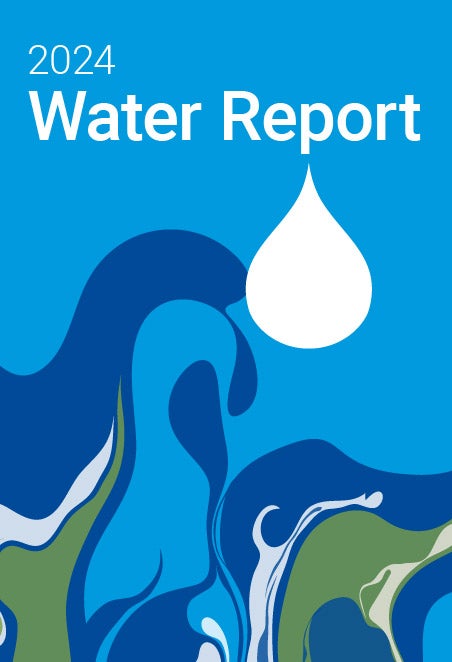
Based on a survey of nearly 630 U.S. water stakeholders, Black & Veatch’s 2024 Water Report offers a comprehensive look into the issues and trends facing the water utility industry today. In this 13th edition of our report, our annual examination measures industry progress, market shifts and emerging challenges and headwinds. Our experts provide detailed analyses of the survey’s findings and key insights into trends driving today’s water infrastructure industry. Gather insights on:
Current industry averages: where does your utility stand?
New developments: what changes are most impacting the industry?
Top year-over-year trends: where is the water industry headed?
Now in its 13th consecutive year, Black & Veatch’s 2024 Water Report dives into the top trends and technologies influencing the water industry today. This year’s survey forming the basis of the report is the largest and most ambitious in Black & Veatch history, representing nearly 630 survey respondents from across the country. Explore how water utilities are handling challenges such as aging infrastructure, workforce issues, sustainability and cybersecurity, and discover new ideas and solutions. Together with commentary from Black & Veatch’s top experts and real-world client project examples, Black & Veatch’s 2024 Water Report gives a comprehensive view of today’s U.S. water utility industry.
Explore the Report:
Sustainability and Decarbonization: Utilities are increasingly focused on reducing their carbon footprint through strategies such as renewable energy, water reclamation and net zero carbon plans. Learn how water utilities are pursuing and measuring these decarbonization goals for a more sustainable future.
Climate Change: As severe weather events in the form of flooding, droughts and wind-fueled wildfires are posing stressors to U.S. water utilities, explore how utilities and communities are responding to mitigate the effects of climate change through bolstered resilience.
Water Supply resilience is top of mind for most U.S. water utilities, especially as droughts and growing demand conspire to strain existing water resources. Discover the top strategies utilities are using to improve the resiliency of their community’s water supply.
Digital Water or “smart water” has proven effective in improving utilities’ operations, providing actionable insights on infrastructure assets. With more data and tools available than ever, see how utilities are approaching their digital strategy to make the most of their data.
Workforce: One of the most important assets of any water utility is the knowledge and experience of its team members, who have been retiring at an increasing rate. To bridge the skill gap, learn how utilities are looking at a combination of outsourcing, recruiting and digital tools.
Cybersecurity has emerged as a pressing, immediate concern for water utilities in response to growing cyberattacks on infrastructure systems. Explore how utilities are moving forward with assessments, training, monitoring and other solutions to protect their essential operations.
Contaminants: Water utilities recently have attracted headlines when it comes to federal water regulations for lead service lines and contamination from perfluoroalkyl substances (PFAS), or “forever chemicals.” Discover how utilities are approaching their contamination challenges.
Wastewater: In this special new section, discover insights specifically applicable to wastewater, residuals, stormwater and reuse facilities. From nutrient removal to wet weather management, learn about the top trends affecting utilities’ water quality operations.
